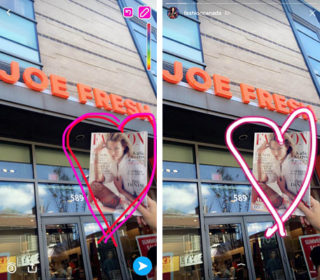If imitation is the sincerest form of flattery, then Facebook, Snapchat and Instagram must be blushing . . . or sharpening their axes, and plotting revenge.
All three social networks have made major changes, especially over the last year, that “borrowed” features from each respective prodigal social institution in order to improve their own product. Now, while all three platforms remain (mostly) unique, the lines are increasingly beginning to blur in terms of updates and ad options available to users and marketers alike.
In 2014, Instagram introduced direct video messages. In response, both Vine and Snapchat followed suit by enabling one-on-one texts, picture messaging and video chats. This turned a one-way conversation (i.e. “look at what posted today”) into a two-way conversation (i.e. “look what I’m doing”) and therefore, more engaging.
“There’s nothing like knowing you have the full attention of your friend while you’re chatting,” Snapchat said in a statement announcing the update.

While Snapchat benefits from its raw, unpolished design—translating more easily into authentic posts—a lack of metrics, or perceived user-friendly interfaces, often prevented older generations and marketers from giving it a go.
Snapchat has had a lot of pressure to prove return on investment to marketers, something that Facebook excels at, although not without its mistakes. To hold its ground against the Goliath that is Facebook, Snapchat has introduced new targeted ad offerings, mid-roll ads and sponsored lenses to help brands stand out on the platform.
Its latest update includes programmatic ad spending, allowing agencies and brands to license its API to do their own buying. With the introduction of Spectacles, the disappearing photo-sharing app—and newly re-branded camera company—is on track to hit $935 million in ad revenue in 2017, according to eMarketer.
Facebook-owned Instagram took full advantage of its brand-friendly tracking systems by introducing “Stories,” a more track-able version of Snapchat’s disappearing messages. It wasn’t long before Snapchat creators took notice and headed over to Instagram for its features like privacy options, searches, pausing and the ability to view a Story without following the poster. Creators find that its easier for users to find or discover their channels, helping them grow an audience.
Until recently, Snapchat cornered the market on augmented reality filters for selfies and video—that is, until Facebook started rolling out lenses of its own in October.
Limited to verified users on Facebook Messenger and the Mentions App, the addition of animated filters will inevitably lead to brand-sponsored versions and the circle of social media copying will continue.
